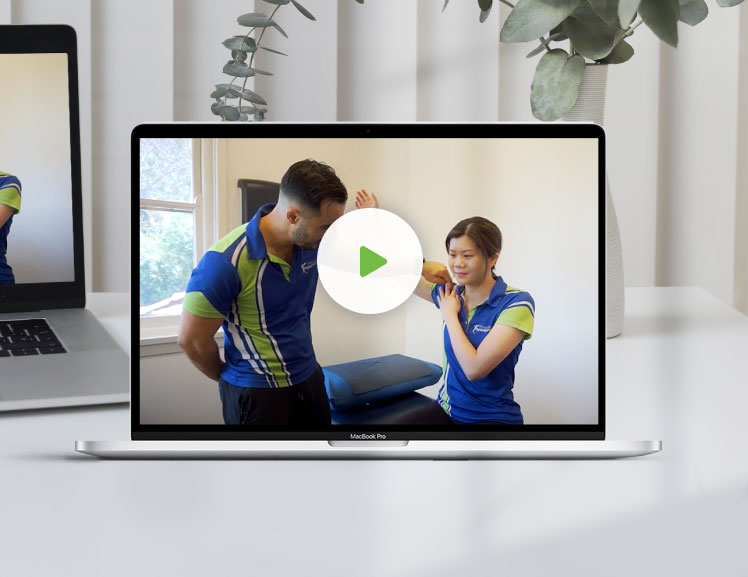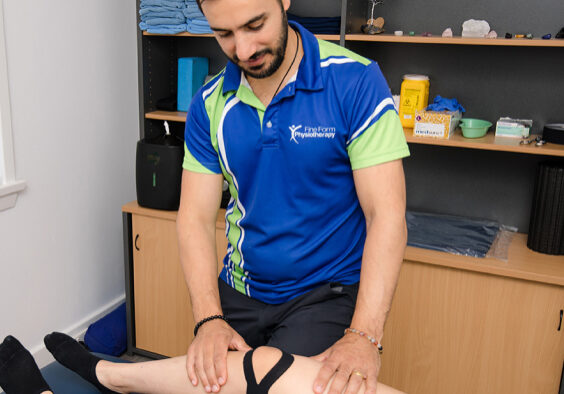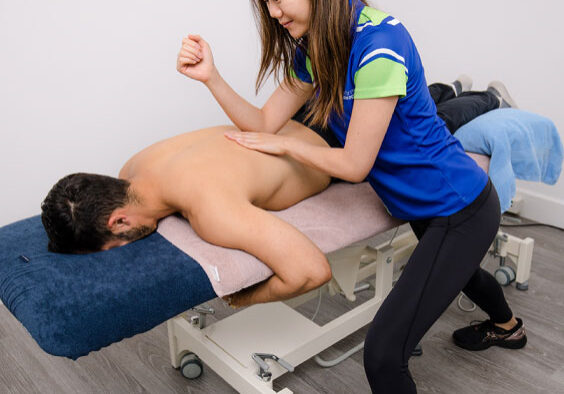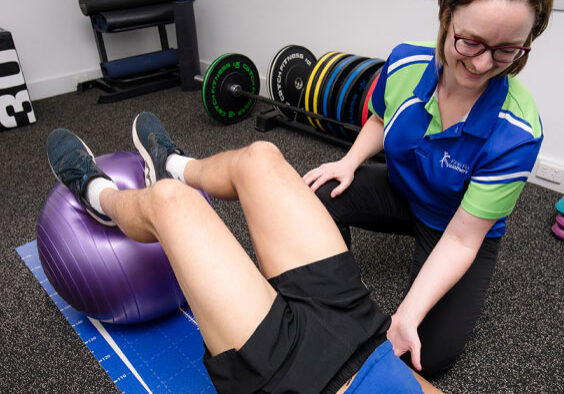Common Problems: Shoulder Pain

This month at Fine Form Physio we take a look at Shoulder Pain.
Shoulder pain can be a real problem, the wear and tear on shoulders from repeated overhead activities can lead to recurrent injury and rotator cuff problems. This includes common activities like swimming, tennis, golf, and many physical jobs.
We use our shoulders and arms for almost everything in our daily life. People over the age of 40 are more likely to have rotator cuff problems.
If you are experiencing pain in your shoulder area from repetitive movement you may be suffering from a condition known as Rotator Cuff Tendinopathy.
What Is Rotator Cuff Tendinopathy?
The rotator cuff is a group of muscles and tendons that surround the shoulder joint, these muscles are important for maintaining stability and control, acting as the core muscles of the shoulder.
Rotator cuff tendinopathy is when a tendon in your shoulder has tiny tears in it or is inflamed and painful. If it’s not treated, it can lead to stiffness or weakness in your shoulder and other long-term issues..
Symptoms of Rotator Cuff Tendinopathy
You will have pain around the shoulder joint (front or back) and down the upper arm. The pain is usually a dull ache at rest and will become increasingly worse when you raise your hands above your head or reach behind you. Patients may also find it painful to sleep on the affected side and will also wake up in the middle of the night.
You also might notice:
- Swelling and tenderness in the front of your shoulder
- A “clicking” in your shoulder when you raise your arms over your head
- Loss of strength or range of motion
- Joint stiffness
How to treat Rotator Cuff Injury
Exercise and education are the best form of treatment for rotator cuff tendinopathy. An essential step in recovery is to strengthen the muscles of the rotator cuff, this will allow the muscles to develop the strength and fitness to support the shoulder and arm in everyday tasks. The recovery program should start with therabands/light weights to build up over a 12-16-week timetable with more functional exercises. Treatment should also include massage and manual therapy techniques to help reduce pain and increase Range of Motion.
Other treatments can include:
- Over the counter medicine: Anti-inflammatory gel or tablets such as voltaren can reduce swelling and pain.
- Ice: A cold pack can help with swelling and pain.
- Dry needling: targeting trigger points to reduce pain and increase function.
- Cupping: increase blood flow and circulation within the shoulder to promote healing.
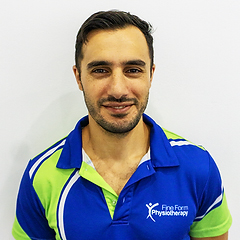
A highly successful physiotherapist with 14 years experience. He has a passion for caring and helping everyone in the community. Ken’s love for his community has seen him work with elite and professional athletes as well as being head physiotherapist for local soccer and rugby clubs and Ryde Little Athletics. He has a postgraduate certificate in Sports Physiotherapy. He is currently studying a Bachelor of Psychology – intending to specialise in chronic pain management, sports psychology, addiction, stress, anxiety and depression. Ken is passionate about athletics and specialises in sprinting and long jump. He can be seen not only on the local athletic tracks but pop in and see him at our amazing Sports Performance Studio also. In his spare time Ken enjoys running, strength training, meditation and reading. He also has three young children to keep him busy.
